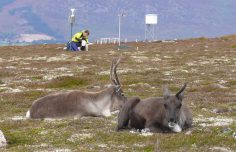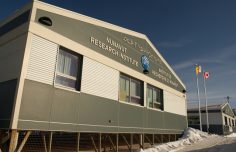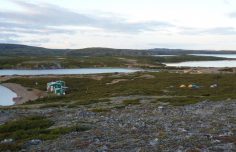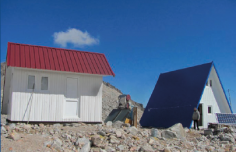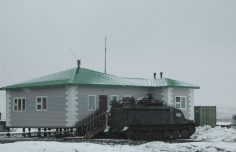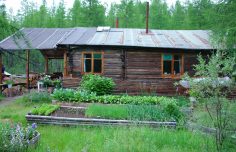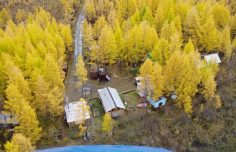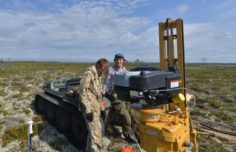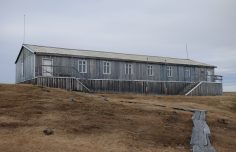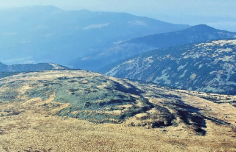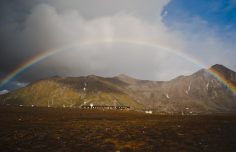Living organisms consisting of two organisms, a fungus (a mycobiont) and a photobiont, living together in a body called a thallus. The photobiont can use light energy to produce sugars. Usually this is a green alga, though some lichens contain cyanobacteria. The fungus benefits from the presence of the photobiont. It is less clear how the photobiont benefits. Possibly algal cells gain moisture, shelter and nutrients.
There are about 20,000 known species of lichenLiving organisms consisting of two organisms, a fungus (a mycobiont) and a photobiont, living together in a body called a thallus. The photobiont can use light energy to produce sugars.... More. In the ArcticDefinitions of the Arctic vary according to environmental, geographical, political, cultural and scientific perspectives. Some scientists define the Arctic as areas having a high latitude, long winters, short, cool summers,... More, lichens account for a large part of the total ArcticDefinitions of the Arctic vary according to environmental, geographical, political, cultural and scientific perspectives. Some scientists define the Arctic as areas having a high latitude, long winters, short, cool summers,... More biomass. They grow on the surface of rocks, on soil and on tree bark and some even grow inside porous rocks. Lichens grow very slowly and some individuals may be hundreds or even thousands of years old. Lichens form a major part of the diet of reindeer and caribou.
For more on fungi, see MycologyThe study of fungi. Fungi are fundamental for life on earth, and important in all environments, including in the Arctic. Many fungi live in close association with other organisms, in 'symbiotic relationships'... More.
